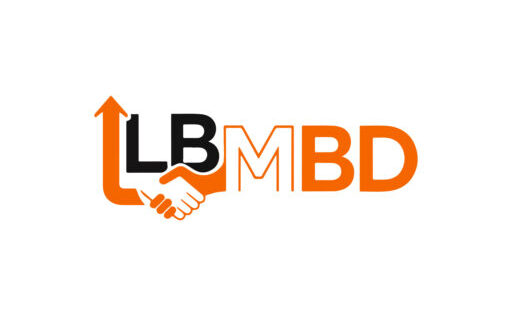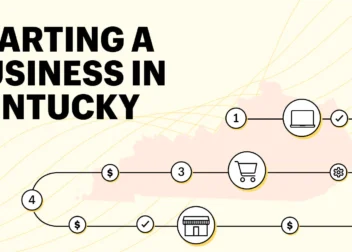How to Start a Small Business
Starting a small business is an exciting journey that requires careful planning and execution. While it can seem daunting, breaking it down into manageable steps makes the process much clearer.
Here’s a comprehensive guide on how to start a small business:
1. Refine Your Business Idea and Conduct Market Research:
Identify a Need: What problem does your business solve, or what need does it fulfill? A successful business often addresses a gap in the market.
Target Audience: Who are your ideal customers? Understanding their demographics, behaviors, and preferences is crucial.
Competitive Analysis: Who are your competitors? What are their strengths and weaknesses? How can your business differentiate itself?
Viability: Is there enough demand for your product or service to sustain a profitable business? Can you afford to execute your idea?
Product vs. Service: Decide whether you’ll primarily offer a physical product or a service (e.g., consulting, cleaning).
2. Write a Business Plan:
Your business plan is a roadmap for your business. It doesn’t have to be a massive document, especially for a small business, but it should cover key areas:
Executive Summary: A brief overview of your company, its mission, products/services, and goals.
Company Description: Detailed information about your business, the problems it solves, and its competitive advantages.
Market Analysis: Your research on industry outlook, target market, and competition.
Organization and Management: Your legal structure (sole proprietorship, LLC, partnership, corporation) and who will run the business.
Service or Product Line: Descriptions of what you sell, how it benefits customers, and its lifecycle.
Marketing and Sales Strategy: How you’ll attract and retain customers, and how sales will occur.
Funding Request (if applicable): How much money you need, what it’s for, and how you’ll pay it back.
Financial Projections: Forecasts of your income, expenses, and cash flow.
3. Fund Your Business:
Determine how you’ll finance your startup costs and ongoing operations.
Self-funding (Bootstrapping): Using your own savings. This gives you full control but can be risky personally.
Small Business Loans: Loans from banks or credit unions, sometimes guaranteed by the Small Business Administration (SBA).
Venture Capital/Angel Investors: For businesses with high growth potential, but often involves giving up equity.
Crowdfunding: Raising small amounts of money from a large number of people, often in exchange for perks or equity.
Friends and Family: Loans or investments from your personal network.
Grants: Government or private grants, often specific to certain industries or demographics.
4. Choose Your Business Structure:
This legal decision impacts your liability, taxes, and administrative requirements. Common structures include:
Sole Proprietorship: Simple to set up, but no legal distinction between you and the business (personal liability).
Partnership: Two or more owners; similar to sole proprietorship in liability, but shared.
Limited Liability Company (LLC): Offers personal liability protection (separates personal and business assets) and simpler taxation than a corporation.
Corporation (S-Corp, C-Corp): Provides the strongest liability protection but has more complex setup and compliance requirements.
5. Choose and Register Your Business Name:
Brainstorm Names: Pick a name that reflects your brand and is memorable.
Availability Check: Ensure the name isn’t already in use. Check with your state’s business registry, the U.S. Patent and Trademark Office (for trademarks), and domain name availability.
Register Your Business: This typically involves filing paperwork with your state and/or local government. You may need a “Doing Business As” (DBA) name if you operate under a name different from your legal business name.
6. Get Federal and State Tax IDs:
Employer Identification Number (EIN): Most businesses will need an EIN from the IRS, even if you don’t plan to hire employees immediately. It’s like a Social Security number for your business.
State Tax IDs: Depending on your state and business type, you might need additional state tax IDs (e.g., for sales tax, employer withholding).
7. Apply for Licenses and Permits:
The specific licenses and permits you need will vary based on your industry, location (city, county, state), and type of business (e.g., retail, food service, professional services). Research federal, state, and local requirements.
8. Open a Business Bank Account:
Separate your personal and business finances from day one. This simplifies accounting, tax preparation, and provides a clear financial picture of your business. You’ll typically need your EIN and business registration documents.
9. Set Up Accounting and Record-Keeping:
System: Choose an accounting system (e.g., QuickBooks, Xero, Wave, or even a spreadsheet for very small businesses).
Track Everything: Keep meticulous records of all income and expenses. This is vital for taxes, financial analysis, and decision-making.
10. Obtain Business Insurance:
Protect your business from potential risks. Common types of business insurance include:
General Liability Insurance: Covers common business risks like customer injury, property damage, and advertising injury.
Property Insurance: Protects your business property (building, equipment, inventory).
Professional Liability Insurance (Errors & Omissions): For service-based businesses, protects against claims of negligence or mistakes.
Workers’ Compensation Insurance: (If you have employees) Covers medical costs and lost wages for employees injured on the job.
11. Develop Your Marketing and Sales Plan:
Brand Identity: Create a logo, website, and consistent messaging.
Online Presence: Establish a website, social media profiles, and a Google Business Profile.
Marketing Channels: Decide how you’ll reach your target customers (e.g., social media marketing, content marketing, local advertising, email marketing).
Sales Process: Define how you’ll convert leads into paying customers.
12. Hire Employees (if applicable):
If your business requires staff, you’ll need to:
Understand labor laws (federal and state).
Obtain necessary insurance (like Workers’ Compensation).
Set up payroll.
Create job descriptions and conduct interviews.
Key Resources for Small Businesses:
U.S. Small Business Administration (SBA): A fantastic resource for guidance, tools, and even funding programs. (sba.gov)
SCORE: Offers free mentorship and resources from experienced business professionals. (score.org)
Small Business Development Centers (SBDCs): Provide free counseling and low-cost training (often affiliated with universities).
Local Chambers of Commerce: Can offer networking opportunities and local business resources.
Industry Associations: Specific to your business type, these can provide valuable insights and connections.
Starting a small business is a marathon, not a sprint. Be prepared for challenges, be adaptable, and continuously learn and improve. Good luck!


